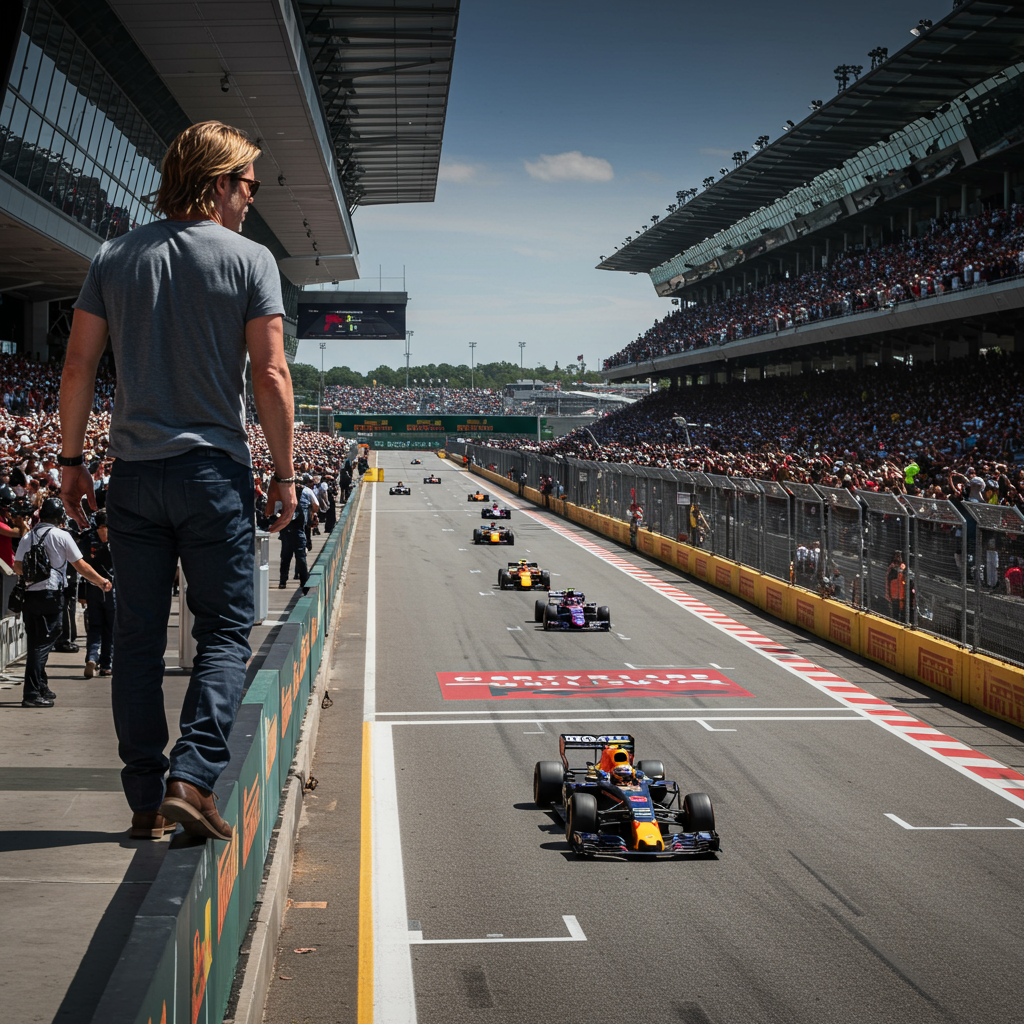Formula 1 stands at a critical juncture in its long-standing ambition to conquer the American market. Despite its global prestige, high-speed drama, and compelling personalities, the European-dominated motorsport has historically struggled to gain mainstream traction in the United States. Now, armed with a hit docuseries, new high-profile races, and a highly anticipated Brad Pitt feature film, F1 is making its most aggressive push yet.
At the heart of this strategy is the upcoming movie, simply titled F1. Starring Brad Pitt as a veteran driver who comes out of retirement to mentor a young talent, the film is produced by Jerry Bruckheimer, directed by Joseph Kosinski (Top Gun: Maverick), and counts seven-time world champion Lewis Hamilton among its producers. F1 leadership and stakeholders view the movie as a pivotal opportunity to introduce the sport to a wider American audience and deepen existing engagement.
Bringing F1 to the Big Screen
The film aims for an unprecedented level of authenticity, leveraging camera technology developed for Top Gun: Maverick to put viewers inside the cockpit. Brad Pitt and his co-star Damson Idris reportedly undertook significant driving themselves, with Pitt describing the experience of handling the powerful cars as awe-inspiring, particularly noting their incredible cornering grip and braking capabilities, despite the intense G-forces.
F1 CEO Stefano Domenicali has called the film a “very big opportunity” to authentically represent the sport. However, balancing realism with Hollywood drama presents a challenge. While F1 drivers who have seen early cuts, like Charles Leclerc and Carlos Sainz Jr., acknowledge slight inaccuracies and “Hollywood-esque” elements, they believe the approach is effective for attracting new fans. Conversely, some hardcore fans have voiced critiques online about perceived unrealistic moments seen in social media snippets from filming. Lewis Hamilton’s involvement as a producer is key, as he has publicly stated he provided input on details like car sounds and crash mechanics to enhance realism, aiming for the “most authentic racing movie that’s ever been made.”
Projected to open domestically to a solid $40 million to $50 million, the movie is expected to generate significant buzz and pique curiosity, similar to how films like Rocky or Bull Durham stirred interest in boxing and minor league baseball.
Beyond the Movie: A Multi-Pronged US Attack
The movie is just one piece of a larger puzzle. F1’s American expansion strategy has gained significant momentum in recent years, notably fueled by:
Netflix’s Drive to Survive: This docuseries became a phenomenon during the pandemic, credited with dramatically increasing F1’s U.S. fanbase, particularly among women (now estimated at 40% of F1’s base). It successfully highlighted the personalities and drama both on and off the track.
Adding New Races: F1 has strategically added high-profile U.S. events in Miami (2022) and Las Vegas (2023) to complement the long-running race in Austin, Texas. These races target the high-end market and provide crucial visibility, although they displace traditional European races and have presented logistical and financial challenges, as seen with the Las Vegas event encountering some local disruption and lower-than-expected revenue in its second year.
Enhanced Fan Engagement: F1 is emphasizing the unique access fans have to drivers and team principals, viewing them as central protagonists in a captivating “theater.” Moments like a retired driver walking through the stands and receiving cheers highlight this connection. The public spats between team bosses like Mercedes’ Toto Wolff and Red Bull’s Christian Horner add a dramatic layer akin to NFL coaches airing their rivalry.
Navigating Persistent Roadblocks
Despite the progress, the road to mainstream American popularity is fraught with obstacles. Major challenges include:
Lack of a Top American Driver: The absence of a competitive U.S. driver at the pinnacle of the sport makes it harder for fans to find a home-grown hero to support. The most recent full-time American driver lost his seat after struggles, and the last before him was in 2007.
Competition: F1 faces stiff competition from established American motorsports like NASCAR, as well as major national sports leagues like the NFL, NBA, and MLB, which dominate the U.S. sports landscape.
Complexity: F1’s scoring system, with separate championships for drivers and constructors, and its layered podium structure can be confusing for American sports fans accustomed to simpler formats.
Time Zones: Perhaps the most significant structural hurdle is that the majority (19 out of 24) of annual races are held in time zones requiring early morning viewing in the continental U.S., a major stumbling block cited by broadcasting veterans.
The Critical TV Rights Negotiation
Crucial to future U.S. growth is securing a new, more lucrative television rights deal. F1’s current partnership with ESPN, valued at about $90 million per year, has helped raise the sport’s profile, including airing more races on the broadcast network ABC. F1 is reportedly seeking to significantly increase this fee in ongoing negotiations.
The choice of partner is key. While ESPN is a possibility, potential bidders like NBCUniversal, Paramount, or tech giants like Apple (a film partner with experience in sports streaming like MLS) and Netflix (with its streaming scale and Drive to Survive history, despite time zone challenges) could offer different blends of reach and monetization. Domenicali acknowledges the fundamental question is how to balance maximum viewership reach with the highest possible revenue.
Experts remain cautious, noting that while Drive to Survive* created a strong niche, proving F1 can transition from early-morning viewing for dedicated fans to mainstream appeal remains unproven. Comparisons to sports like golf (tournament structure, international events) or soccer (European stars gaining traction) offer potential models, but both have advantages F1 lacks (e.g., U.S. teams/players, widespread participation).
Ultimately, F1’s push in the U.S. is an ambitious gamble. The Brad Pitt movie represents a high-profile attempt to break through the noise and invite new fans into the dramatic world of Formula 1, hoping to “rev up” Americans for the real-life spectacle and accelerate the sport’s growth trajectory in this challenging, yet potentially lucrative, market.
References
- www.hollywoodreporter.com
- www.hollywoodreporter.com
- www.hollywoodreporter.com
- thenightly.com.au
- <a href="https://www.imdb.com/news/ni65338852/?ref=nwcart_perm”>www.imdb.com




